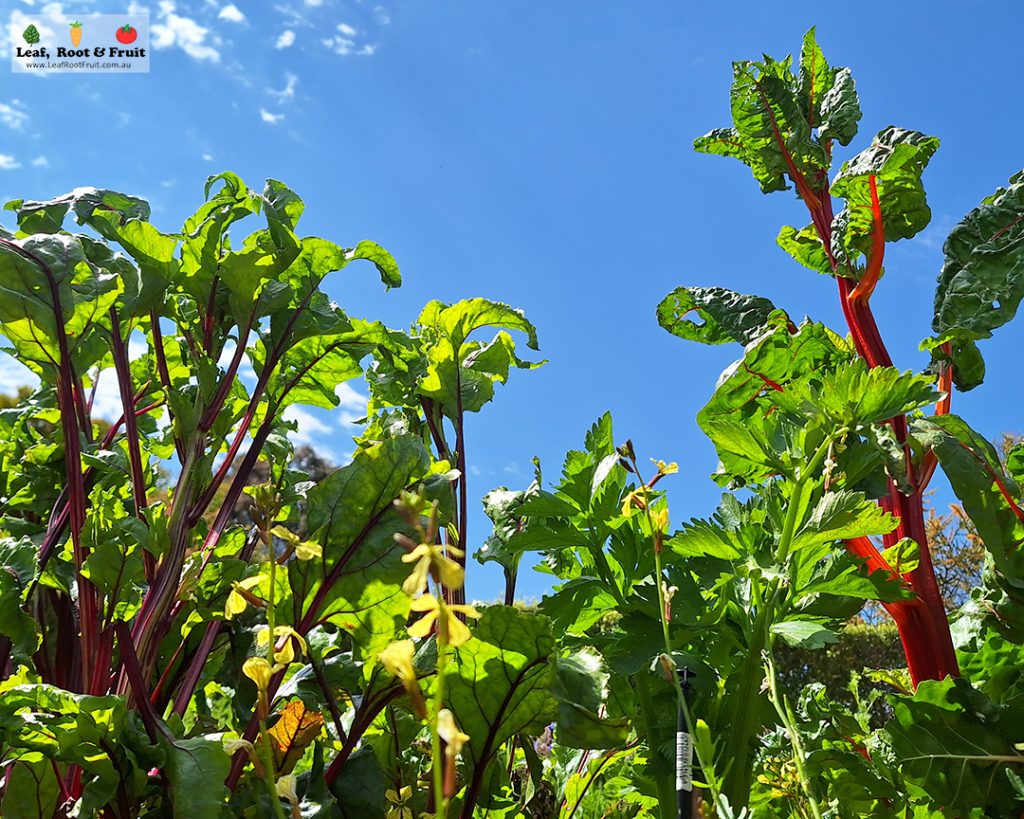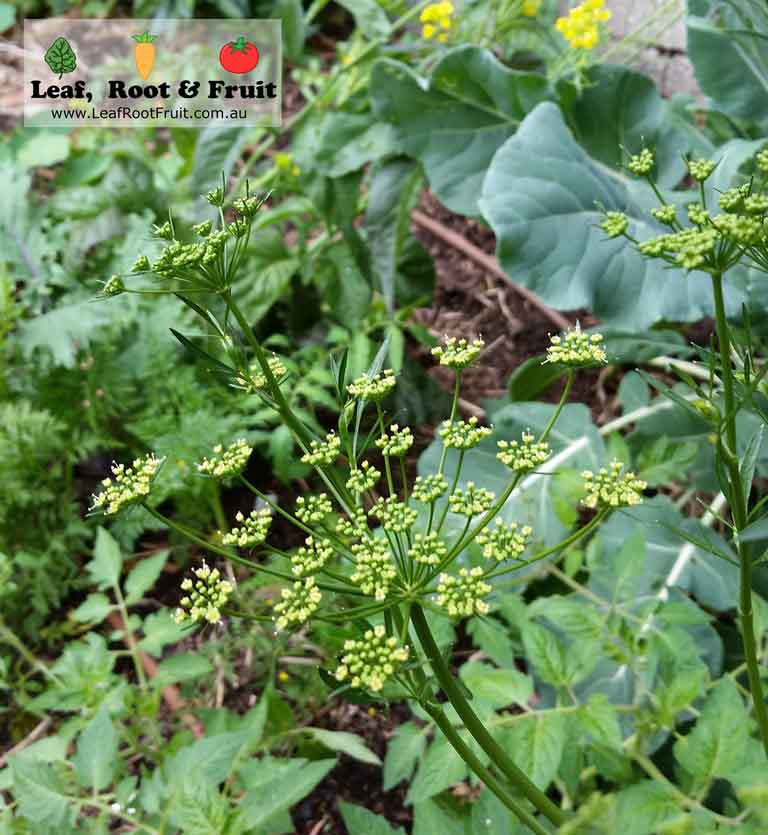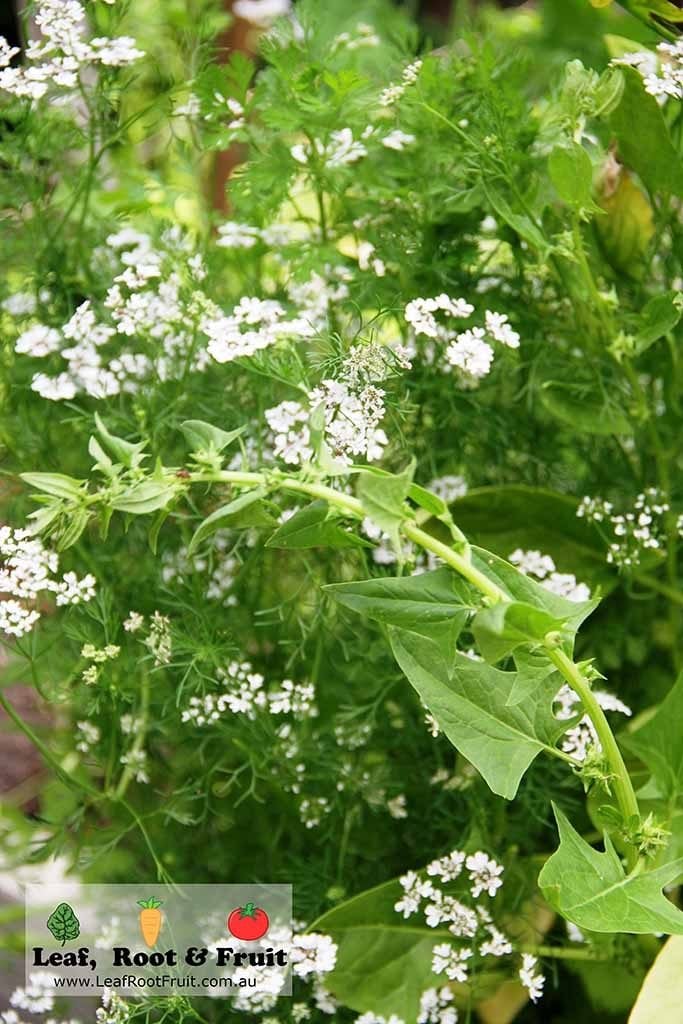
Around late October and early November, I start receiving a lot of inquiries related to coriander, silverbeet and parsley. Usually the enquiry is from a puzzled gardener who has been growing great plants all winter, but suddenly everything has bolted (flowered), and is about to set seed.
The process of bolting occurs like clockwork. I used to manage many gardens across Melbourne and the silverbeet all set seed at the same time. Within a week of each other, all the silverbeet plants start flowering regardless of the individual microclimates. The same thing occurs with parsley, dill, fennel, coriander, spinach and rocket.
The process behind this phenomenon is called photoperiodism. This is a physical reaction and developmental plant response, to the relative lengths of daylight and darkness, that the plant experiences.

The Earth tilts on its axis throughout the year. This means that in winter, the days are much shorter, than in summer. Conversely, the nights are much longer in winter than in summer. Once we pass our Winter Solstice, the days start to increase in length until we reach the summer solstice.
Plants have evolved to use these lengthening days as a cue to flower and set seed. The cue for most leafy greens is increasing daylight hours, often over 12 hours.

For example, you may have a variety of coriander that bolts once the day length increases beyond 12 hours.
On September 19th – the day length will be 11 hours and 59 minutes
On September 20th – the day length increases by 2 minutes to 12 hours and 1 minute.
This triggers the coriander plant to start flowering.
The process of initiating flowering, will take weeks for the central stem and the flower to develop, so it may be a while before you notice it (which is why most of my enquiries about this don’t start until October).
The photoperiodism phenomenon is so hardwired into plants, that even tiny seedlings will bolt at this time of the year. It’s actually the length of the night rather than the length of the day that influences the plant. We know this because researchers have experimented with plants by increasing the day length and night length under controlled conditions.
Seed saving slow bolters
It’s important to note that photoperiods i.e. the length of daylight (or more accurately the length of darkness required to induce flowering,) not only vary from species to species of plants but also between strains and varieties. So you may have one strain of coriander plant that bolts after 11 hours and 50 minutes of day length and another that bolts after 12 hours and 35 minutes.
Often you can find varieties of leafy greens that are labelled as “slowbolt”. This variation is important for seed saving. If you continually select and save seed from the plants first to bolt, then you will start to select for quicker bolting varieties.
Aim to select seeds produced by plants that are slower to bolt. Hopefully you can develop your own strain that is “slowbolt”.
Read more about saving seeds here.
Not all vegetable plants are influenced by photoperiodism. Some plants that don’t rely on the sun to induce flowering are corn, peas, tomatoes and cucumbers.
Want to know more about growing your own food?
My Vegetable Patch from Scratch series is popular with both novice and seasoned gardeners alike. It covers everything you might want to know about growing vegetables.


How incredibly informative and interesting! I’m going to be watching my coriander on those dates. Fascinating.
Hi Anne,
Just keep in mind that the dates are hypothetical. It really is dependent on the strain and to some extent the individual plant as to what day (night length) induces flowering.
What is certain is that some time between now and November your coriander will bolt to seed!
Good Luck and Happy Gardening!
Duncan
Hi Duncan,
I like your explanation of daylength and plant bolting. Some of the root veg do this too – carrots, parsnips and beetroot for example…and yes, it’s very important to eat (or at least pull up) the ones that look like bolting first: if you let them go, they get very tough and fibrous.
This strategy prevents you from accidentally saving the seed of early bolters, too. I spend a lot of time in Spring inspecting them for that first tell-tale stem lengthening, and eating the guilty!
We’re in a coolish mountain climate up here in Gembrook, but the rule still applies.
Cheers,
Hi Rose,
Yes indeed, some of the root veg do this too. Thanks for sharing your wisdom
Good Luck & Happy Gardening!
Duncan
Have you got a magazine or book with all the information sent to me by email for every season. Thank you
Hi Doreen,
I’ll take that as a kind compliment… thanks! At this stage I don’t have anything hard copy, it’s all in newsletters or blog posts. One day I’ll prioritise putting it all into a book or some sort of publication. But for now it’s mostly electronic. Participants in our Science of Edible Gardening Workshop Series take home a set of notes from each workshop. Over the 8 workshops it amounts to about 250 pages of notes… one could argue that is the makings of a book! I’ll keep you posted.
Good Luck & Happy Gardening!
Duncan
Hello again Duncan,
I’ve just been rereading your great notes on photoperiodism, and I have a feeling that day-length does have an effect on tomatoes. My hothouse July/August grown ‘babies’ always look lanky and pale at first, no matter how warm I keep them. The September planted ones, which get longer daylight of course, always look sturdier, and often catch up with the others by November.
It’s not the flowering time so much that is affected, but the growth. So, varieties called ‘Early’ something, may be short-daylight tolerant rather than (or as well as?) cold tolerant. What do you think?
Hi Rose,
Day length affects a surprising amount of plants, animals and organisms in so many different ways. It is entirely possible that day length also plays a role in tomatoes. However, I’ve noticed other factors that also have a huge influence on tomatoes during the growth and time periods you are referring to. Potting mix or soil has a massive role as does temperature (particularly of said soil/potting mix). Pot size can surprisingly have a big influence, as does the size of the greenhouse. Genetics also plays a big role.
I’m wondering if your observations are more tied to the lengths of the days providing better opportunities to access light? That is, the plants have longer hours of day to photosynthesise and grow later in spring. This would especially be the case if there are trees or other objects nearby that are influencing the accessible light to some extent. I would say it is a complex combination of all of the above. I have now gardened in many different settings, with quite a few different greenhouses. I’ve played around with potting mix, pot size and different varieties. For me, I have an ideal transplant date. I want to have a plant with an ideal size and condition at that date. I’ve played around over the years to work out which sized pot, which potting mix, which varieties and what time to sow the seeds to make all of that happen, in a particular greenhouse (as different greenhouses have dramatic differences in outcomes). Day length possibly comes into this, but it’s beyond my control to influence it (other than planting later or earlier in the year).
In short, day length possibly/probably does have some influence on tomatoes. But it would be very challenging for a home gardener such as myself to design an experiment that could isolate that influence from other factors such as temperature etc.
Great observation and thoughts. I appreciate you sharing them
Happy gardening
Duncan